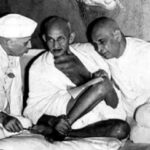Veer Shiva Ji, one of India’s most revered historical figures, symbolizes bravery, valor, and strategic prowess. Born during a tumultuous time when the subcontinent faced foreign invasions and internal conflicts, Shiva Ji Maharaj rose as a beacon of hope for his people. His legacy continues to inspire millions across the globe, making him a celebrated warrior king and a visionary leader.
Early Life of Veer Shiva Ji
Shiva Ji was born on February 19, 1630, in the hill fort of Shivneri in Maharashtra. His father, Shahaji Bhonsle, was a prominent general in the Bijapur Sultanate, while his mother, Jijabai, played a crucial role in shaping his character. Jijabai instilled in him the values of courage, justice, and devotion, which laid the foundation for his future endeavors.
From a young age, Shiva Ji exhibited exceptional leadership qualities and a deep sense of responsibility toward his people. He was trained in martial arts, swordsmanship, and military tactics, preparing him for the battles that lay ahead.
The Rise of the Maratha Empire
Veer Shiva Ji’s journey to power began in his late teens when he started capturing forts strategically located across the Western Ghats. His conquests, including Torna Fort at the age of 16, marked the beginning of the Maratha Empire’s rise. By employing guerrilla warfare tactics, he successfully outmaneuvered larger and better-equipped armies.
One of his most notable victories was the Battle of Pratapgad in 1659, where he defeated Afzal Khan, a formidable general of the Bijapur Sultanate. This victory solidified his reputation as a tactical genius and earned him the admiration of his followers.
Shiva Ji’s Administration and Governance
Shiva Ji wasn’t just a warrior; he was also an exceptional administrator. He established a well-structured governance system, ensuring efficient administration and justice for his subjects. His policies promoted welfare, agriculture, and trade, helping the Maratha region prosper economically.
He introduced the Ashta Pradhan Mandal, an eight-minister council responsible for various aspects of administration. His navy was among the most formidable in India, protecting the Maratha coastline from external threats..
Coronation and Expansion
In 1674, Veer Shiva Ji was coronated as Chhatrapati at Raigad Fort, marking the official establishment of the Maratha Empire. The coronation was a grand event, symbolizing the rise of an independent Hindu kingdom amidst the dominance of the Mughal and Deccan sultanates.
Post-coronation, he continued expanding his empire, establishing forts, and defending his territories against the Mughals. His expeditions in the southern regions further strengthened the Maratha Empire’s influence.
Legacy of Veer Shiva Ji
Veer Shiva Ji’s legacy is unparalleled. He not only founded an empire but also instilled a sense of unity and pride among his people. His strategies, governance, and foresight laid the groundwork for the Maratha Empire, which continued to challenge the Mughals and later became a significant power in India.
Several monuments, forts, and institutions are dedicated to his memory, ensuring that his contributions are remembered for generations. His life story is a testament to what one can achieve with courage, vision, and perseverance.
Conclusion
Veer Shiva Ji’s tale is not just a story of conquests but a saga of vision, courage, and the undying spirit of freedom. His life continues to inspire leaders and warriors worldwide. By remembering and honoring his legacy, we keep alive the values he stood for—bravery, justice, and unity
Related posts:
 Who is Shiva? – The Supreme Consciousness in Sanatan Dharma
Who is Shiva? – The Supreme Consciousness in Sanatan Dharma
 Shiva in the Puranas – Exploring the Legends of the Mahadev
Shiva in the Puranas – Exploring the Legends of the Mahadev
 Sardar Patel – The Unifier of India in the Shadow of Partition
Sardar Patel – The Unifier of India in the Shadow of Partition
 The Role of Chandra Shekhar Azad in Indian Independence
The Role of Chandra Shekhar Azad in Indian Independence
 Netaji Subhas Chandra Bose: The Journey of a Committed Revolutionary Nationalist
Netaji Subhas Chandra Bose: The Journey of a Committed Revolutionary Nationalist
 Why Dr. Ambedkar’s Ideas Matter in 2025
Why Dr. Ambedkar’s Ideas Matter in 2025
